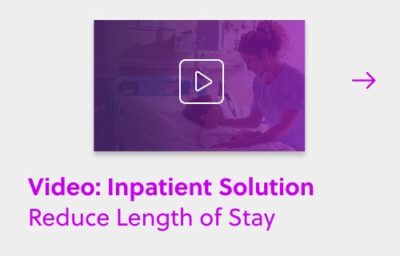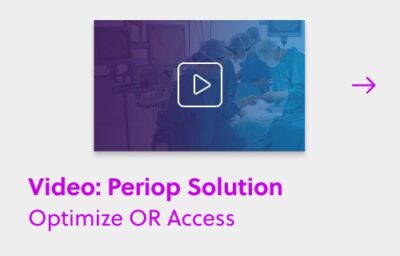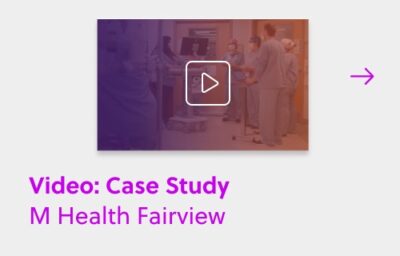Written by Keri Barnett-Howell, Change Management Program Manager at Qventus
![]()
“We’ve heard of you,” the charge nurse said, clearly irritated that she had to be at the meeting, thumbing through her phone to make sure no emergencies were happening without her, “but we don’t know anything about you.”
This is the usual greeting when we finally meet with front line providers after the contract is signed. We are a Silicon Valley health tech startup and the historical wisdom is that if you have the technology that works you are good to go. Traditionally health IT has been sold to C-suite executives but rarely with any frontline representation. It’s then no surprise that when the frontline doctors first get introduced to new technology, the reception ranges from skepticism to outright hostility.
Everyone who works in healthcare knows how difficult it is to engage providers. They’re busy. Lives are on the line. They’re tired. They’ve had six emergencies before 8 am. Most of all, they’ve heard this song and dance before. (“Another improvement project?”) And what, really, can technology even do? EMRs didn’t make their lives easier. Technology rarely lives up to its promise, which leaves our odds of winning them over that much narrower.
My job as the Change Management Program Manager at Qventus is to figure out how to win over hospitals and get staff engaged with our product. Our product will fail, full stop, without their participation. Our deployments are shaped by the following rules:
- Front line providers are not only users and customers but essential partners in product deployment.
- Technology alone is not the solution. It is the tool we use to arrive at the solution. Be up front and transparent about what our product can and cannot do.
- One size never fits all. Deploy the technology with intensive input from department leaders and staff.
What does this look like in practice?
Part 1: Go directly to the front line.
After the contract is signed, the Customer Success Manager goes onsite to meet with all front line providers. If we’re deployed at an Emergency Department, we meet with all ED physicians, nurses, and very importantly, the ancillary services that support the ED.
The importance of this was highlighted at a hospital in Portland, during an uncomfortable meeting with the lab managers. They seemed off-put by our questions and answered in clipped sentences, until finally the senior lab manager burst out with the question, “So how long have you been at this hospital anyway?” We were confused, but answered truthfully that it was our first time on-site and the deployment had not yet begun. His face cleared immediately and he started nodding happily. “We’re always the last to know and the last to be involved. I really appreciate you bringing us in so early.”
Part 2: Immediately introduce what the product can accomplish.
When we introduce Qventus, we give a wide introduction of the product and the different possibilities it opens up for physicians, nurses, and ancillaries. We are also careful to emphasize that the product is a way to relieve providers of a cognitive load and give staff a different way to operate, but our technology alone will produce limited results. It requires provider participation and engagement.
Although it’s necessary for us to highlight, this approach has had mixed results. A senior physician leader in an ED in Texas had been burned by other startups promising technology that never came, and he thought we were saying that our product could not do what we had sold to his hospital. It took several conversations with other physician leaders to clear the air.
Technology has been misrepresented and misunderstood for a long time, and sometimes it falls on us to be straightforward on what AI can accomplish today. However, once expectations are set, that’s when the real excitement can begin.
Part 3: Deploy the technology with intensive input from department leaders and staff.
People are always more invested in being part of the solution rather than dictated to. So many things in healthcare come from the top down: more documentation, more training, more unexplained shifts in workflows. This is a chance for providers to be deeply involved in creating a huge shift in how their department operates. Not everyone will jump on board, but something built and signed off on by leaders in the department makes adoption that much easier.
We saw this at a hospital in Silicon Valley, when we were doing a product demo for a new inpatient feature. We had discussed the solution with department leaders, and now we were introducing it and gathering feedback from the front line staff that would be driving product usage. They had a lot of questions and concerns, but department leaders were able to answer almost everything, and you could see the front line visibly relaxing and starting to think of new ways to use the feature. They trusted their department leaders as they would never trust us, an outside vendor. The best moment in our line of work is when we don’t have to say anything; the clients have taken over and are driving deployment.
Our product requires providers to do a complete mental shift on how hospitals operate. Healthcare is reactive; we ask them to be proactive. Healthcare is driven by individual decisions; we ask them to think as a unit. When we go on site to introduce ourselves, we are not convincing them to use a product: we’re convincing them to act in new, unproven, and largely untested ways. This is a big ask, and we don’t underestimate it. It’s on us to provide the support and resources to make this shift happen. When we do that, leadership and providers can be fully engaged and on board with our product.
How we know it’s working
At a hospital in the midwest, the ED staff was skeptical of our surge warning, a predictive recipe that can detect 1-2 hours before a surge and send an alert to ED and ancillary staff. We explained that the idea was for ancillaries and other units to pitch in when the ED was overwhelmed.
The nurse manager said that their ED felt like an island, marooned from the rest of the hospital and left to fix everything on their own. None of the staff believed that anyone would help them. Many of the EDs we work with feel this way, and it’s our job to show the ED what’s possible.
We went through our deployment process, and once the surge warning was turned on, the results stunned the ED. Messages flew back and forth with all different ancillaries immediately responding to ED needs.
“16 waiting for beds,” the nurse manager texted after a surge warning came in, “there are multiple boarding.”
An inpatient nurse manager responded, “Extra step down nurse coming in to accommodate three more beds in 6F.”
Happy to hear it, the ED nurse manager replied, “Will need lots of transport help shortly!”
Transport responded, “Call when ready for transport! We are ready to assist.”
Other inpatient units chimed in to say they were working on transfers to step down units, the OR sent extra staff down to the ED, and the tired but pleased ED staff ended the conversation with this: “Patients are still arriving. They are thankful for the quick transport and ready beds. Thank you to our OR and inpatient friends!”
This is real, visible change. An exhausted ED experienced a complete turnaround which benefited both providers and patients. This is how we know Qventus is working. The technology provides the impetus, but both providers and patients feel a real change in the system.


